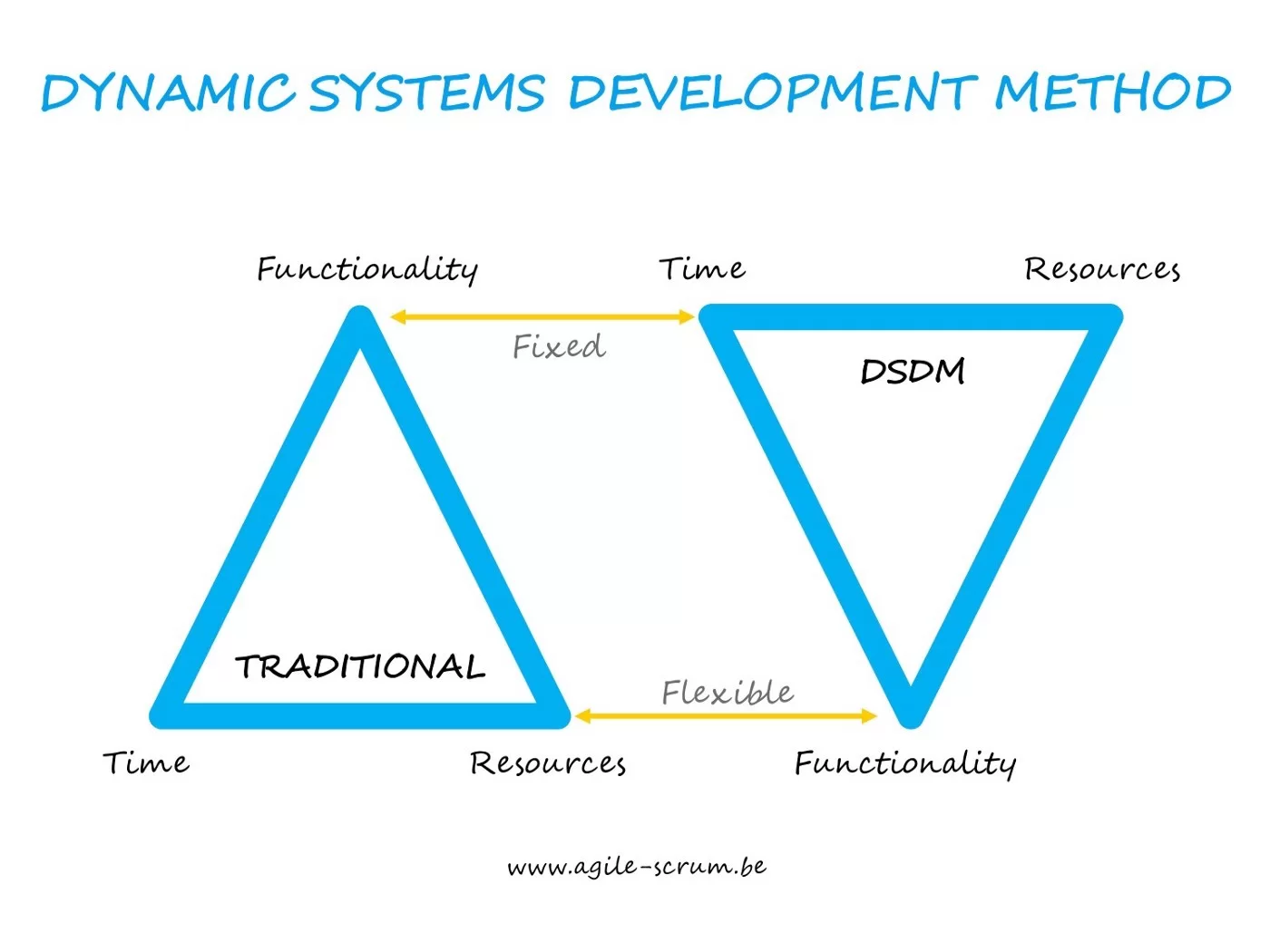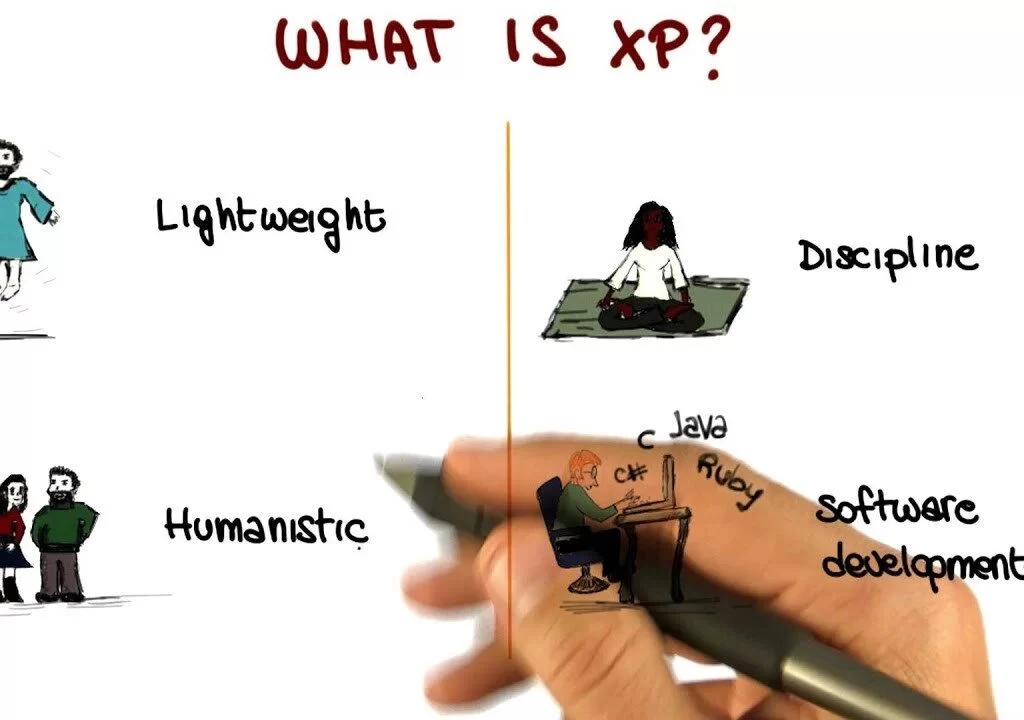Agile software development is a topic that has many sub-topics under it. It can be viewed as a tree with frameworks like Scrum, Extreme Programming, and Feature-Driven Development. Agility is the ability to create things and respond to changes as quickly as possible.
This is the reason why most companies are following this rather than traditional software product development. Eventually, Agile development is a lot more than development practices like pair programming, test-driven development, planning sessions, and sprints.
Most people think of it as a very specific method and as an umbrella that covers a lot of things under it. In this article, the readers will get to know what it actually is and how it gives enterprises an edge in the market.
Agile development is actually a practice that is based on values and some principles that are expressed in Manifesto For Agile Software Development and have some 12 principles behind it.
It defines a proper manner in which software development services are approached and it actually is a really good habit. This keeps the architecture, costing, and time in check so that companies can yield better quality and more quantity. Agile is different from other methods of software development.
Because it is the only one that focuses on the people who are working and the way they work together. Collaboration is the way to find solutions, especially for self-organizing cross-functional teams. They can in this way utilize the best practices that are in their context.
Understanding Agile Methodologies
As quoted by Alistair Cockburn, the set of rules and activities that a team agrees to perform can be termed a methodology. The same methodology can impact and be implemented in different ways in software development companies according to the size of the organization.
Accordingly, Agile is also a methodology that a company agrees upon and follows its values and principles. Now, this will also make some people change what they earlier thought. Most people think that the Agile development methodology is Scrum and XP. Alistair was the one who used the term “framework” for both of these, i.e., Scrum framework and XP framework.
Understanding Different Agile Software Development Methods
-
Scrum
Without getting into it in detail, we can still say that it is the most popular framework or method for Agile development. In this framework, developers/development companies can address complex adaptive issues. And along with this, they could still productively and creatively deliver a product of the best value.
This tool is used to manage software product development processes (projects). The main focus is on the adaptive development of the software product in which a cross-functional team could work as one unit in order to reach the project goal.
The goal target/deadline is short (2–4 days) and this method helps the unit to fulfill it as quickly as possible. This has values, roles, ceremonies, rules, artifacts, and the best practices collected within itself.
-
Lean
This framework originated with one of the companies that revolutionized the manufacturing of physical goods in the ’50s and ’60s, which is the Toyota Production System or TPS. Lean is a framework that has a stronghold in manufacturing and application in knowledge work.
It helps enterprises to reduce/eliminate waste and improve their operations and processes while boosting their innovation. All of this has to affect the quality of the product and the time and the cost incurred to develop a product. Software development or enterprise product development is one of the natural applications of the Lean methodology.
Obviously, because just like in manufacturing it provides a systematic flow for development as well. It generally provides a definitive process that has to be followed by the companies that adapt to it.
There are three pillars of Lean that guide all the practices, and they are:
- Continuous Improvement
- Lightweight Leadership
- Respect For People
-
Dynamic Systems Development Methods (DSDM)
This framework is basically made up of eight principles, one lifecycle and a product, roles and responsibilities, and some best practices that will make the development process tight and better.
All of these things support the thought of providing strategically aligned business advantages, especially to custom software development companies in the least possible time to an enterprise so that they get the best ROI.
This is a methodology that prefers scheduling and quality over functionality. This can fix the cost, quality, and time taken to develop a software product by using the MoSCoW method of prioritizing.
This method breaks the process into four different requirement parts, and they are:
- Must-Have (M)
- Should Have (S)
- Could Have ©
- Won’t Have (W)
The eight principles that are followed here are also mentioned below:
- Focusing On The Business Requirements
- On-Time Delivery
- Collaborate
- No Compromise With Quality
- Building The Product Incrementally From A Strong Foundation
- Iterative Development
- Clear and Continuous Communication
- Demonstrate Control
-
Extreme Programming (XP)
As a matter of fact, this is both popular and controversial. This method was originally described by Kent Beck. XP provides a disciplined approach to software development services that focuses on delivering high-quality software products quickly and continuously.
Basically, this methodology is said to improve the quality and responsiveness according to the change in the requirements of customers. It has a lot of involvement with customers and works on the rapid feedback that is continuously received.
The planning is done continuously and teams work closely in order to deliver working software at intervals of 1–3 weeks. There were four simple values on which the original XP method was based and they were simplicity, communication, feedback, and courage.
It also has 12 supporting practices:
- Planning
- Small Releases
- Customer Acceptance Test
- Simple Design (Prototype)
- Pair Programming
- Test-Driven Development
- Refactoring
- Continuous Integration
- Collective Ownership Of Code
- Coding Standards
- Metaphor
- Sustainable Pace
Conclusion:
On one hand, Agile development has become one of the most popular topics in the software development industry in today’s world. It is a different and effective way of managing software development projects. Rather than a particular software development model, it is a set of methods that can be applied based on values and principles.
On the other hand, this self-organizing and cross-functional model is used by a massive number of organizations. By all means, though it is very important to assess the needs and the goals of a software development company first and then choose the model, the agile model has been suitable for every industry and its requirements.
About The Author:
Technically, Tarun Nagar is the Founder & CEO of Dev Technosys, a global ranking mobile app development company. With 10+ years of experience in enabling then Startups which are now global leaders with creative solutions, he is differentiated by out-of-the-box IT solutions throughout the domain. He is known for his visionary qualities and adaptability to technology and trends, passionate as he is in every aspect dedicated to making IT simple, accessible, and approachable for business enterprises.
Connect on:
That’s it! Everything you need to know about Agile Software Development. But, if you’ll need more details, you can always Consult Us for more support.
NB: You can Advertise your Brand, Business, or Products through our Blogging Site to reach a wider Audience Market quickly. Whilst, Market Targeting to convert more leads from any niche audience. And then, turn them into active Website Users (traffic) and future Product Consumers (buyers). With the best rates from $100 for YouTube Ads, $75 for Banner Ads, $55 for Permanent Posts, $25 for Dofollow Links or even as Featured Gigs if you Get In Touch with our web tech experts:

You enjoyed reading this Blog Post, right? Well, Subscribe to our Free Newsletters Daily and never miss a thing from us:



